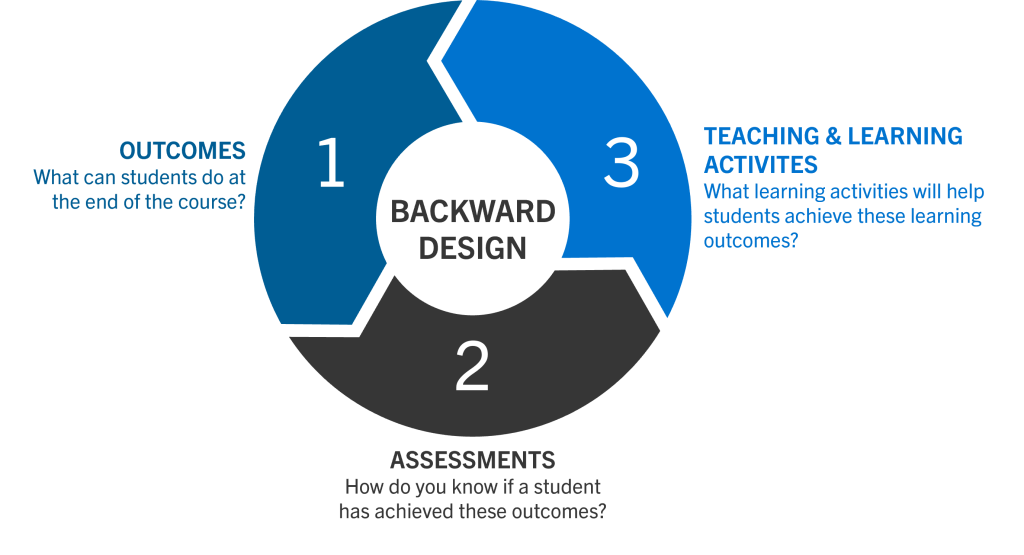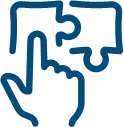Developing a TLP
The strongest TLPs are built on a solid foundation of course design. At Niagara College, we follow a backwards design approach to ensure alignment of curriculum. This means the design process begins with your course learning outcomes, or what your students should know, be able to do, or value at the end of your course. Then, assessments are developed to measure the course learning outcomes. In other words, the assessments ask students to demonstrate that they’ve achieved the learning outcomes. Finally, teaching methods and learning opportunities are planned that relate to the course learning outcomes and their associated assessments.

We use the same approach when developing a TLP:
- First, we review the course outline (i.e., the learning outcomes)
- Then we develop an assessment plan
- Next, we develop the course schedule, including the content sequence (i.e., teaching and learning activities)
- Finally, we bring all these components together in the form of a TLP
 Expand the rows below to explore these steps in more detail.
Expand the rows below to explore these steps in more detail.
 Get the Tools!
Get the Tools!
- Ideal Assessment Plan Template: plot out the assessments in your course and draw out the connections between them. Use the 14-week table at the bottom to plan out when different assessments will occur across the term.
- Course Planning Worksheet Template: plan which content and assessments will happen in a given week along with what delivery format they will be offered in.
- Teaching and Learning Plan Checklist: ensure your TLP includes all required information.
Sharing your TLP
In support of students’ access to course expectations and schedules, as well as their ability to track their progress in a class, all NC faculty are required to post course TLPs and student grades to courses in Blackboard. Your TLP should be available to review by the first day of class to enable students to make informed decisions about enrollment. Should you require any assistance contact Centre for Academic Excellence.
In addition to posting the TLP ahead of time, we recommend reviewing the course expectations as outlined in the TLP during the first-class period. This can prevent a lot of misunderstandings as the semester progresses.
Tips and Resources
- Check with your own School or Division to identify the relevant local policies and procedures that need to be considered or applied when designing a TLP for your course. Some important policies are listed below.
- Consult ncLibraries for assistance with identifying and arranging access to course readings, including clarification of copyright issues.
- Consult the Accessibility Hub for information on how to design an accessible document. Note that, per the Accessibility for Ontarians with Disabilities Act or AODA, any course-related information for post-secondary courses in Ontario (e.g., a course TLP) must be provided in accessible formats.
Adjusting your TLP during a Semester
If changing circumstances require your TLP to be adjusted as the course progresses, you must communicate the changes to all students. Announce and share the revised TLP on Blackboard. We also recommend discussing any changes with students in class as appropriate.
With this understanding of the TLP development process, let’s dive deeper into course assessments. To begin, the next section explores why it’s important to assess students.
The process for developing (or re-developing) and ensuring alignment among the components or deliverables of a course; involves establishing context, preparing materials, checking alignment, and managing content
